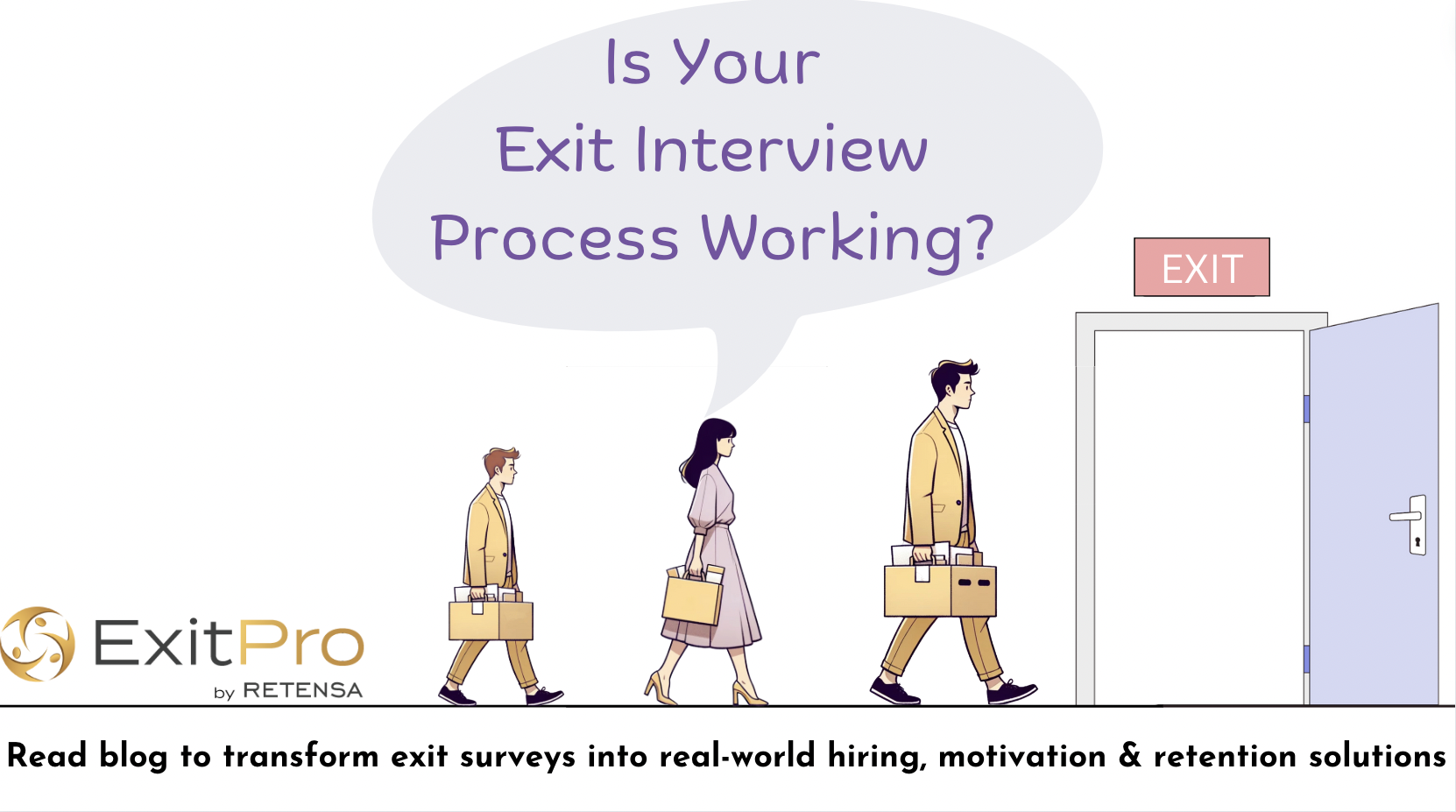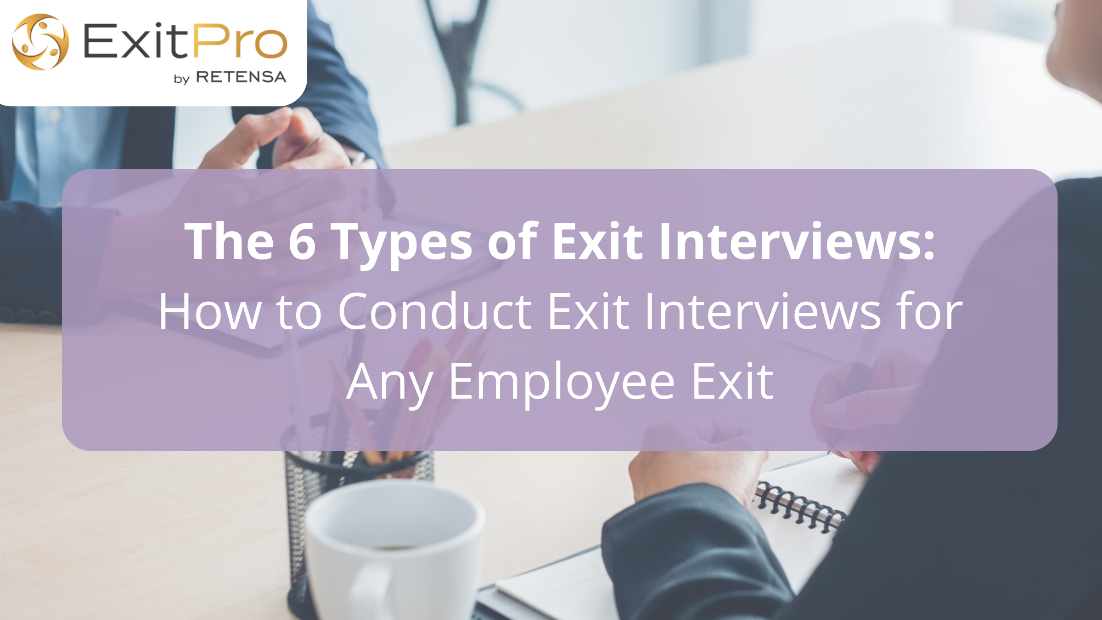Conducting effective exit interviews is a critical step in ensuring a smooth transition for departing employees while uncovering valuable insights for organizational growth. Unfortunately, many companies falter in their approach, missing opportunities to learn and improve. When HR leaders prioritize a structured and employee-focused exit interview process, they not only ease the transition for departing employees but also gain actionable feedback to improve retention. In this blog, we’ll explore five common mistakes companies make during exit interviews—and how to avoid them.
MISTAKE #1: Not Informing Employees about the Exit Interview Process
One of the most common mistakes HR departments make during the exit interview process is failing to clearly communicate how employees should participate. When employees are left in the dark, the process can feel like an afterthought, leading them to perceive their feedback as undervalued. This often results in incomplete responses or shallow insights, diminishing the value of the entire exercise for both the organization and the departing employee.
Organizations that provide clear, step-by-step instructions for completing exit surveys tend to see significantly higher response rates and more actionable feedback. Instead of simply handing over an exit form, HR leaders should take the time to explain how the data will be used and reassure employees about the importance of their input. Offering flexible options—such as online surveys, phone interviews, or mobile text invitations—can further boost participation. For instance, a simple question like, “Which method would you prefer for completing the exit interview?” shows respect for the employee’s preferences and increases their likelihood of engaging.
Why This Matters:
Organizations that implement structured exit interview processes can gain significantly more actionable insights than those using unstructured methods. These insights are essential for identifying and addressing workplace challenges, improving employee satisfaction, and reducing turnover. Additionally, research by the Work Institute reveals that replacing an employee can cost anywhere from 33% to over 150% of their annual salary, factoring in recruitment, training, and lost productivity. By conducting thorough and well-structured exit interviews, organizations can uncover the root causes of employee turnover, enabling them to develop targeted strategies to mitigate these costs and retain top talent.
For instance, a healthcare organization, collaborated with the Work Institute to enhance its exit interview process. By implementing a structured approach that included personalized surveys and follow-up mechanisms, the organization achieved a 65% response rate. The insights gathered helped identify key factors contributing to turnover, leading to actionable strategies that significantly reduced first-year turnover rates. Similarly, a global financial institution, partnered with Gartner to develop targeted exit surveys6. These efforts improved the understanding of employee turnover risks, enabling the company to make informed decisions that reduced turnover-related costs. These examples highlight how refining exit interview processes can lead to better response rates and meaningful organizational improvements.
Best Practice:
To ensure employees feel valued and engaged, communicate the process clearly and provide multiple options for participation. Here’s how:
Step 1: Explain the purpose of the exit interview and how the feedback will be used to improve workplace conditions.
Step 2: Offer a choice of methods for completing the interview (e.g., online, phone, or text).
Step 3: Follow up to confirm the process was smooth and thank employees for their time.
MISTAKE #2: Asking Bad Survey Questions
The quality of insights gained from exit interviews is only as good as the questions asked. Yet, many companies fall into the trap of asking vague, generic, or leading questions that fail to uncover meaningful data. These ineffective approaches often leave HR teams with skewed results, making it difficult to identify actionable areas for improvement. While it’s critical to gather feedback from departing employees, it’s even more important to ask questions that delve into the heart of their experience. A well-structured survey can reveal key insights about workplace strengths, areas for growth, and how leadership can better support their teams. On the other hand, biased or overly broad questions lead to unreliable data that distracts from real opportunities for change.
For example, rather than asking, “Did you like working here?” a better approach might include:
- “What factors influenced your decision to leave?”
- “What improvements could enhance the employee experience in your department?”
- “How would you describe the support you received from your manager?”
According to the 2020 LinkedIn Talent Report, 58% of employees cited poor management as a key factor in their decision to leave—yet these critical insights often go unaddressed due to ineffective questioning during the exit process. Additionally, research by Gallup highlights that teams with strong leadership experience 21% higher profitability and retention rates, reinforcing the importance of probing into management practices.
Best Practices for Success:
- Avoid double-barreled questions: Instead of combining multiple issues into one question, such as “Did you leave because of workload or lack of career growth opportunities?”, focus on addressing each topic separately. This ensures clarity and allows employees to provide specific, actionable feedback
- Use open-ended prompts: Questions like “What could we have done to improve your experience?” encourage thoughtful, detailed answers.
- Rely on structured templates: A reliable exit interview template can help HR teams collect consistent, actionable data.
Investing in well-crafted questions ensures that exit interviews become a powerful tool for improvement rather than an exercise in futility. By tailoring questions to uncover specific insights about workplace culture, leadership, and engagement, organizations can transform feedback into strategies that foster employee satisfaction and loyalty.

MISTAKE #3: Failing to Leverage the Feedback from Exit Interviews
While many organizations conduct exit interviews, the true value lies not in the collection of data but in turning insights into actionable improvements. The article emphasizes that exit interviews should be strategically designed to uncover patterns and root causes of turnover. When organizations prioritize follow-through on the insights gathered, they can address systemic issues and improve retention rates, transforming employee feedback into a competitive advantage.
Actionable Steps for Feedback Utilization:
- Automate Monthly Reports: Deliver exit interview insights directly to leadership’s inbox to track trends and identify red flags.
- Hold Quarterly Team Meetings: Use findings to discuss recurring themes and develop team-specific solutions.
- Create Bi-Annual Retention Plans: Develop strategies targeting key areas for improvement, such as workload distribution, training opportunities, or recognition programs.
A major household name manufacturer facing high turnover partnered with NBRI to conduct structured exit interview surveys. The insights revealed that employees felt undervalued and overburdened, especially during peak production periods. In response, the company implemented targeted recognition initiatives and revised workload distribution practices. As a result, they achieved an 80% reduction in employee turnover, demonstrating the transformative impact of actionable feedback on employee retention and organizational stability.
Fact or Fiction: Star Employees Want Promotions
Effective exit interview reports provide more than just a summary—they offer deep insights into employee demographics, workplace culture, and trends that reveal systemic issues.
Best Practice:
To ensure feedback leads to actionable results:
- Implement tools to automate data collection and reporting.
- Regularly review trends and integrate findings into HR strategies.
- Monitor the impact of changes and refine retention plans accordingly.
MISTAKE #4: Completing the Exit Interview with the Separating Employee
One of the most common pitfalls in the exit interview process is relying on managers to lead interviews with departing employees. This approach often introduces bias and creates discomfort, as employees may fear that candid feedback could harm their reputation or future references. These concerns limit the quality of data collected, leaving organizations without actionable insights to improve their workplace culture. When managers oversee exit interviews, employees may feel compelled to sugarcoat their experiences or avoid addressing sensitive issues altogether. This dynamic results in skewed or incomplete feedback that fails to capture the true reasons behind employee departures. To mitigate this, organizations should consider leveraging third-party providers or confidential exit interview software.
Outsourcing exit interviews to an impartial exit interview company can significantly enhance the quality of feedback by creating a sense of psychological safety for departing employees. Research by the Work Institute reveals that external exit interviews not only result in a 40% increase in response rates but also uncover more accurate and actionable insights9. By leveraging these richer insights, organizations can identify recurring issues, address systemic problems, and implement targeted strategies to improve employee retention and satisfaction.
Best Practices for Success:
To ensure exit interviews yield meaningful results:
- Outsource the Process: Use third-party tools or services to maintain neutrality and confidentiality.
- Guarantee Confidentiality: Assure employees that their feedback will remain private and be used constructively.
- Standardize the Approach: Utilize consistent surveys and templates to gather comparable, actionable data.
Third-party providers eliminate bias, ensure consistency, and foster trust. Employees are more likely to share constructive feedback when they feel their responses are confidential and won’t lead to retaliation. This approach not only enhances the quality of insights but also helps organizations foster positive relationships with alumni employees who may return in the future.

MISTAKE #5: Retaliating Against the Employee
Fear of retaliation remains one of the biggest barriers to collecting candid feedback during exit interviews. Employees may worry that sharing their true thoughts will lead to negative consequences, such as unfavorable references or other punitive actions. This fear discourages open participation and limits the organization’s ability to gain meaningful insights. When departing employees believe their feedback might lead to retaliation, they are less likely to provide honest responses. Some employers inadvertently reinforce this fear by taking feedback personally instead of using it constructively to improve workplace culture. This lack of trust can prevent organizations from identifying key issues and making effective changes to retain talent.
To eliminate the fear of retaliation, companies must prioritize building trust and ensuring confidentiality in the exit interview process. A neutral third party or anonymous feedback system can reassure employees that their insights will remain private and be used solely for organizational growth.
For example, by ensuring confidentiality, a company can alleviated employees’ fear of retribution, significantly increasing participation rates. Aligning with industry insights that anonymous surveys can improve response rates by as much as 74%10, this change uncovered previously overlooked concerns related to workload and team dynamics, enabling the organization to implement targeted improvements.
Best Practices for Preventing Retaliation Concerns:
- Communicate Confidentiality Policies: Clearly explain to employees how their feedback will be protected and used constructively.
- Use Neutral Third-Party Services: Outsourcing the process fosters psychological safety and ensures unbiased data collection.
- Reassure Through Action: Act on feedback transparently to demonstrate that it is valued and used for positive change.
Neutral exit interview providers create a safe space for employees to share feedback without fear of repercussions. This approach not only ensures honest and reliable data but also builds trust and goodwill among departing staff. Companies that prioritize confidentiality are more likely to foster loyalty among alumni employees, who may return or refer others to the organization.
Conclusion:
Exit interviews are one of the most cost-effective tools for improving employee retention and workplace culture. By avoiding common pitfalls—such as poor communication, ineffective questions, and under-utilized feedback—companies can unlock actionable insights that drive meaningful change.
Key Takeaways:
- Communicate the process clearly and offer flexible participation methods.
- Ask actionable, unbiased questions that yield meaningful insights.
- Automate monthly reports summarizing findings, enabling leaders to track trends, identify potential issues, and develop targeted improvement strategies..
- Use third-party tools to ensure impartiality and confidentiality.
- Prioritize trust and transparency to encourage candid employee input.
Good exit interviews are the easiest part of any organization’s employee retention efforts. By avoiding these common mistakes, employers will make the most of their exit interview questions. The right exit interview process gains valuable insights to invest HR’s budget in the highest ROI.
References (MLA Format):
- Do You Really Know Why Employees Leave Your Company?
- https://info.workinstitute.com/hubfs/2019%20Retention%20Report/Work%20Institute%202019%20Retention%20Report%20final-1.pdf
- https://www.linkedin.com/business/talent/blog
- https://www.gallup.com/workplace/349484/state-of-the-global-workplace.aspx
- https://workinstitute.com/success_stories/parkview-health/
- https://emt.gartnerweb.com/ngw/globalassets/en/human-resources/documents/customer-success-stories/reducing-turnover-exit-interview-to-employee-experience.pdf
- https://hbr.org/2016/04/making-exit-interviews-count
- https://www.nbrii.com/case-studies/employee-exit-interviews/
- https://workinstitute.com/blog/the-benefits-of-conducting-external-exit-interviews
- https://www.forbes.com/councils/forbeshumanresourcescouncil/2021/07/12/five-reasons-your-organization-needs-an-anonymous-employee-feedback-program/




